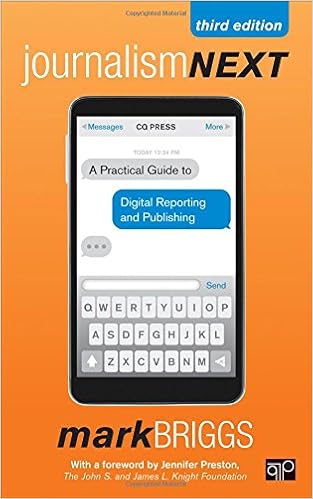Last Friday, John Cook published a Q&A on TechFlash.com where I discussed the state of hyperlocal (and my own transition from journalist to entrepreneur). The post elicited an email from a weekly newspaper publisher who asked many probing questions. In an attempt to open up the discussion on the current and future business opportunities of hyperlocal, I asked the publisher if I could publish his comments and questions here – along with my response.
If you have ideas, questions or observations, I invite you add them in the comments.
Here is an excerpt of what I received …
You clearly have a better grasp of current conditions or at least strong enough faith in your vision of it to take the leap into a new venture.
We’ve been producing newspapers from for a very long time. We recently went to a Drupal platform and this has taken place against the rise of news blogs.
We have outside.in attached to our sites but quite honestly I don’t see how it helps us in any way.
It still boils down to one salesperson, selling an ad to a local business. That equation (despite attempts to get around it) seems likely to stay. Sales is a personal process not an automated affair. If that’s a given then it has to be worth it to the salesperson and the publisher. In the case of blogs, they are the same people.
So..it begs the question, “How is a two person operation a sustainable business model when if serious illness or an accident happens the business is essentially on hold”?
The CPM or CPC figures are at such a low level that it has driven publishers of conventional media to offer huge commissions…but even that does not work since the pricing is so low that even a major sales effort does not result in a level of income that would support someone.
The blog owners can get away with working 15 and 18 hour days but you can’t pay an employee to do that.
Isn’t this a process of (as DEVO famously put it) DE-Evolution…or if you prefer “Creative Destruction” that is seeing the old model crumble while a new model based on a fractionalized set of providers emerge?
The fact is that the overwhelming majority of the audience doesn’t really give a damn about being “sourced” … It’s typically about 5% that choose to comment or contribute. Most people have better things to do.
So I have to question all these “models” that suggest that a local restaurant only draws from a 10 block radius, or that an insurance office can benefit from the tiny square banner ad that appears adjacent to a big white space on a blog.
I believe the idea of local news blogs is highly dependent on a series of factors that are not present in most places. They require:
1. A geographically isolated enough area that is large enough for coverage but too small for big media
2. A large enough local advertising base not dominated by chain stores
3. The financial wherewithal to hang on through the first two years as an audience is built
4. The ability to work 12 to 18 hours a day
5. The use of a police and fire scanner to cover breaking local news
6. Knowledge of and proficiency with blogging software
7. The establishment of good relationships with local law enforcement, politicians, and the business community
8. A weak or lacking local news competitor
9. A tipping point event that draws attention to them such as a weather emergency
Your thoughts?
Below is the response I sent via email. If you have thoughts, questions or observations, I invite you add them in the comments.
 I’m sure I am operating with more “faith” than “grasp” in terms of a vision at this point. But I do see opportunity in all the disruption. Unfortunately there is going to be a period of chaos before we clearly see what the next model will be.
I’m sure I am operating with more “faith” than “grasp” in terms of a vision at this point. But I do see opportunity in all the disruption. Unfortunately there is going to be a period of chaos before we clearly see what the next model will be.
As far as advertising sales, I think you have to recognize what Google has done with self-serve advertising before you declare sales cannot be an automated affair. Billions of dollars worth of advertising illustrate the new market reality. While few content publishers have been able to scale up a self-serve system to their liking, a new model that combines self-serve software with some minor sales effort (phone calls and emails instead of presentations and mock-ups) is starting to emerge. Call it a “publisher assist” model, it’s more scalable than the old model and more personal than software alone.
There is certainly some “creative destruction” at play here. Some online communities have a much higher participation rate than others. Some much higher than the 5% you cite. Here’s an excerpt from my new book about one success:
In Bakersfield, the Californian newspaper jumped in early, launching the first “citizen journalism” project at a U.S. newspaper (Northwest Voice) in 2004 and local social network (Bakotopia) in 2005. The results, propelled by persistent and creative marketing, are impressive. By 2009, the Californian’s online community included 30,000 user profiles, 29,000 friend connections, 1,000 blogs written by “readers.” (All this in a community of about 330,000 people.) The news company deployed a local niche strategy with 11 online brands and six of those have a corresponding print publication.
But, as you rightly point out, it takes some work to build. While a small blogging team working 15-18 hours a day is not a scalable model, those that have built a readership have proven there is demand for local (or hyperlocal) news and information. The next challenge is finding a business model that is sustainable. I think this is a better problem to try to solve than the inverse; if there were no audience for local news and information.
Your list of criteria appears heavily colored by the more famous models like the West Seattle Blog. I think points 1, 2, 5, 6, 7, and 8 are repeatable in most areas that have any population at all. (The first point, especially, can be met in many locations that have a big media outlet since so many are struggling to build or maintain a loyal digital audience.) The financial wherewithal and ability to work 12 to 18 hours a day are more difficult to repeat, which is why you see projects like Patch.com expanding as a franchise and new businesses like the San Diego News Network securing venture funding to make it happen.
If (when?) more cities and towns lose their daily newspapers, more opportunity will emerge. As advertising evolves into something viable online – or on a mobile device – the business model to pay for news gathering and publishing will become more clear. But even without a newspaper closing or the discovery of a new form of digital advertising, there are too many content publishers making it work every day in the U.S. (see political, sports, technology and mommy blogs) to dismiss the current opportunity.
 Mark Briggs
Mark Briggs  Posted in
Posted in 




